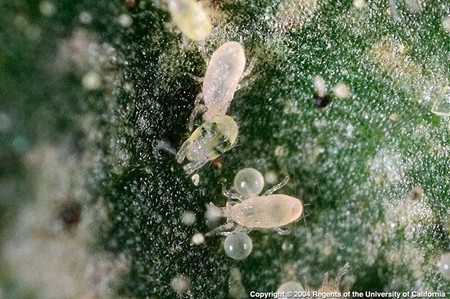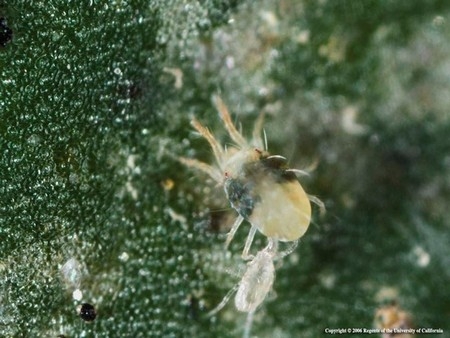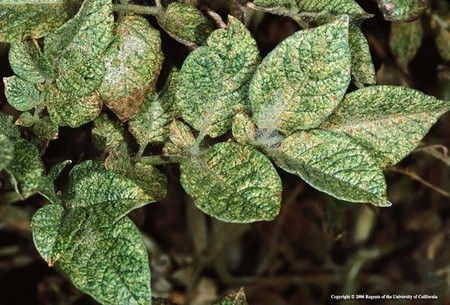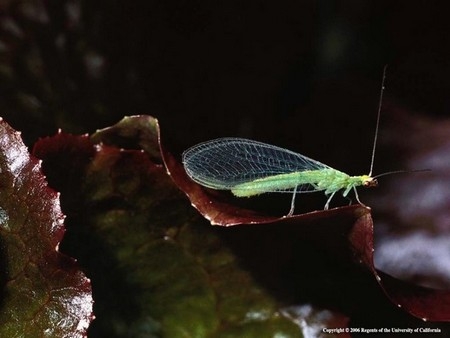Spider mites are very common pests found on many of our landscape and vegetable garden plants. They are tiny and difficult to see but once you learn about them, you might start seeing evidence of infestation on a wide variety of plants.
Spider mites live in colonies, mostly on the back side of leaves. They are less than 1/20 of an inch long, have eight legs, and if you look carefully, you can see two red eyespots. When their population is high, you might see dense webbing covering the leaves, twigs, or fruit.
Spider mites use piercing mouthparts to suck cell contents from leaves. Damage appears first as a stippling of light dots on the top of the leaves. Evidence of their presence can be seen or felt on some leaves—fecal matter, cast off exoskeletons of young mites, dead mites, and fine webbing becomes more obvious with heavy infestations. With heavier infestations, leaves can turn yellow and fall off.
Spider mite activity is most severe and damaging during hot, dusty conditions, and when plants are water-stressed. June through October are prime months for these little pests. In Contra Costa's relatively mild climate, spider mites can feed and reproduce year-round on evergreen plants. On deciduous plants, they can spend the winter under rough bark or on the ground.
To control spider mites, make sure your plants are not drought stressed. Dusty conditions often encourage spider mite outbreaks. Regular, forceful spraying of your plants with water, especially the undersides of the leaves, will often reduce their numbers and the damage they do.
Spider mites have many natural enemies that help control them, including lacewings, predatory thrips, and predatory mites. Maintaining a diverse garden habitat can encourage these predatory mites and insects to stay in your garden, waiting to assist with pest control.

If more control is needed, consider using an insecticidal soap or an insecticidal oil such as Neem oil in your sprayer and make sure you spray enough to fully cover both tops and bottoms of leaves. You'll need to spray soap again two or three days later to cover any newly hatched spider mites, because soap doesn't have residual action.
If you choose to spray insecticidal soap or insecticidal oil, don't spray if temperatures are over 90 degrees F and make sure to follow the label instructions. Before spraying it on the whole plant, test it on a few leaves to make sure it doesn't damage them. Using broad spectrum insecticides is not recommended as these can kill the natural enemies of spider mites, which may result in an increase in the spider mite population
How to prevent spider mites
Scout plants for their presence anytime hot and dry conditions occur. If you catch spider mites early, you may be able to prevent a large infestation just by removing a part of a plant or a single plant. Watering down dusty walkways and misting plants when it's hot and dry can make it less attractive to spider mites. If a plant becomes too infested and treatments are not working, consider removing that plant to reduce the chance of the spider mites traveling to other nearby plants.
For more information on managing spider mites, see this Pest Note: https://ipm.ucanr.edu/PMG/PESTNOTES/pn7405.html
Help Desk of the UC Master Gardeners of Contra Costa County (SEH)


